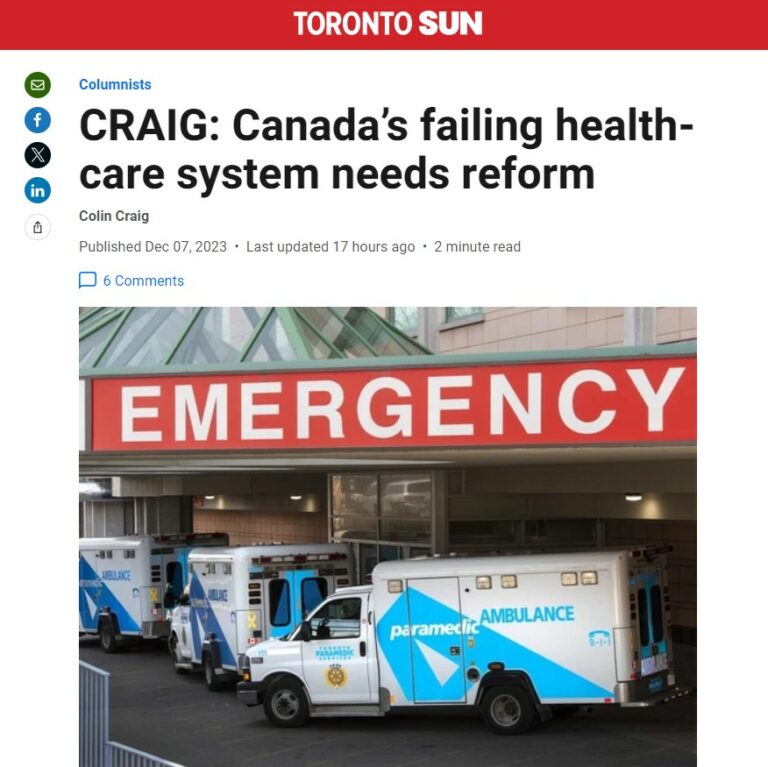TORONTO SUN COLUMN: Canada’s Failing Health Care System Needs Reform

We’ve come a long way from “Canada has the best health-care system in the world” — a common claim in this country 20 years ago.
Now you would be hard-pressed to find anyone who shares those words without injecting sarcasm. Despite record spending in health care, the system is failing right across the country. Stories about patient suffering are everywhere — only serious health reform will improve outcomes.
Last year, Vancouver patient Allison Ducluzeau was told she had as little as two months to live while battling cancer. The government told her there was nothing it could do to help her, but did offer her medical assistance in dying (MAiD). Ducluzeau refused to accept her death sentence. She went to the U.S., paid for treatment and recently celebrated her marriage in Hawaii.
In Saskatchewan, patient Jolene Van Alstine has been living with chronic pain for six years and was told it could be another two years before she receives surgery. Van Alstine has contemplated applying for MAiD.
Some readers may remember cancer patient Laura Hillier’s call for help that went viral back in 2016. The 18-year-old Ontario patient had a bone marrow donor lined up but passed away after waiting seven months for a bed and a surgeon to become available.
More recently, Ontario patient Shannon Anderson died in 2021 after being forced to wait too long for a heart operation. She left behind four children. Incredibly, the local hospital called to schedule her surgery a few days after she had died.
Some will claim these are anecdotes, so consider this figure. Ontario Health data obtained by SecondStreet.org shows that 931 patients have died in Ontario while waiting for heart surgery since 2013. Of those, 244 died after waiting longer than the maximum recommended wait time.
In Nova Scotia, government data shows that 50 patients died last year while waiting for surgeries that could have potentially saved their lives. Of those, 19 had waited longer than the maximum recommended wait time.
While the system is well-funded and has many well-meaning doctors and nurses, the structure itself is broken. Other countries operate universal health-care systems that regularly outperform Canada. How do they do it?
For one, patients in virtually every other country are not forced — by law — to wait for government care. They are given a choice between government care or private options. This takes the pressure off the public system every time a patient decides to pay for private surgery. Canada would be wise to follow suit.
Other better-performing systems also partner with private clinics or private companies if it makes sense. For instance, Sweden has a government-owned hospital that is managed by a private company. It delivers exceptional care for 30% less than nearby government-run hospitals. The savings allow the system to treat more patients.
Governments in other countries also deliver better care by funding hospitals based on their output instead of just cutting cheques each year and hoping for the best. If Canada did that, hospitals would focus more on patient care and reduce inefficiencies, such as losing millions by running Tim Hortons stands.
One thing is clear. It’s time for health reform in Canada. Decades of throwing money at the system and hoping for the best clearly hasn’t worked.
Colin Craig is president of SecondStreet.org, a Canadian think tank
This column was originally published on December 7, 2023.
You can help us continue to research and tell stories about this issue by making a donation or sharing this content with your friends. Be sure to sign up for our updates too!


